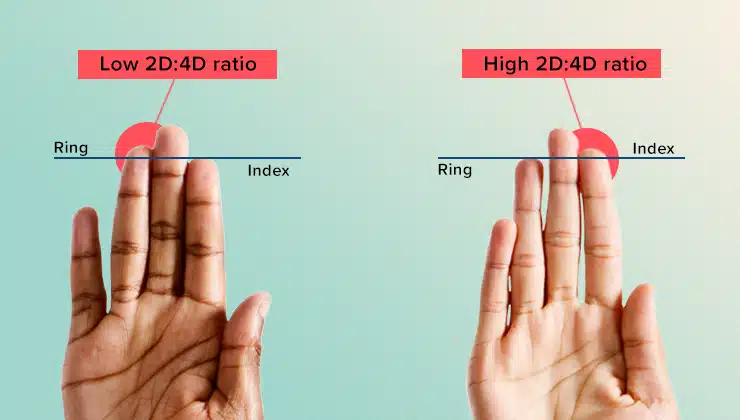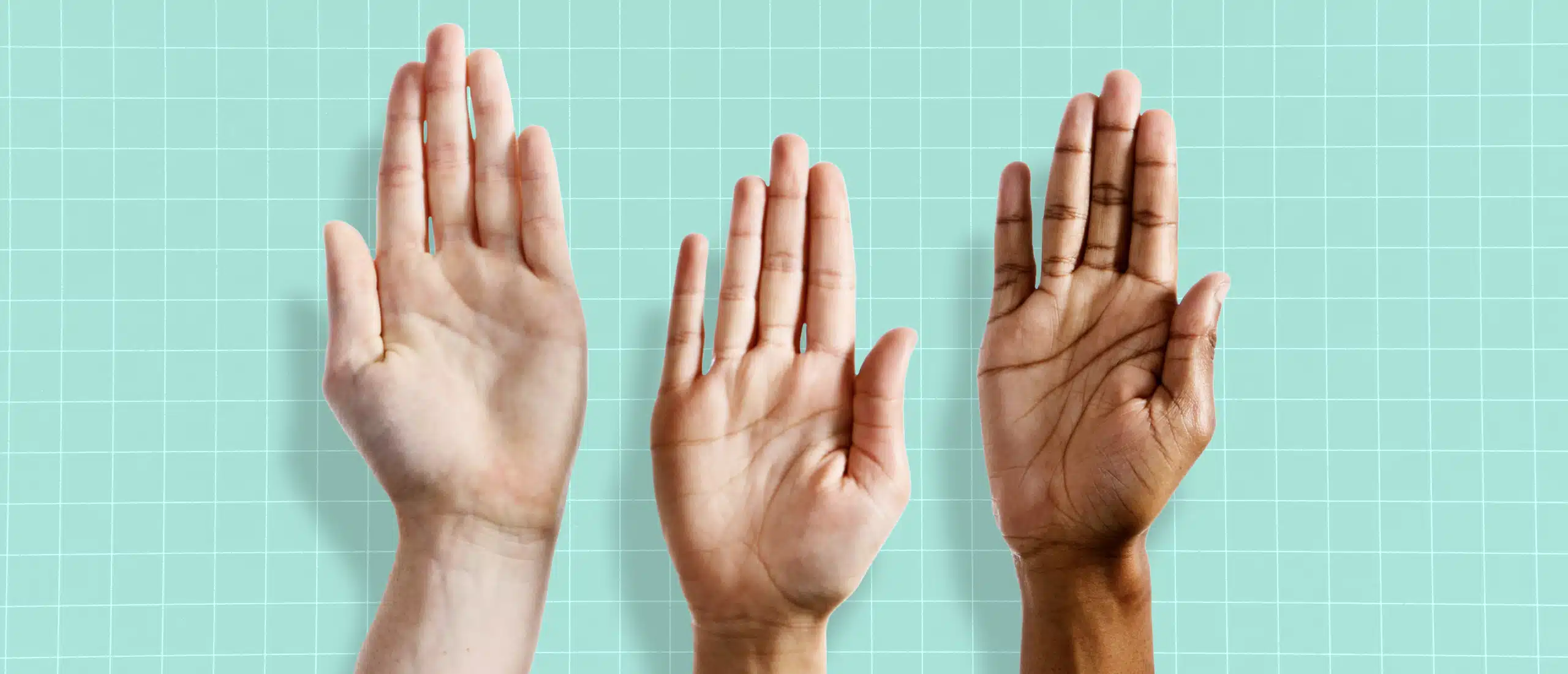Can the Length of this Appendage Really Reveal Low T?
W
hat if you could skip the blood work and know your hormone levels just by looking at your hands? Well, you can’t—but that hasn’t stopped rumors about a controversial “test” called the testosterone finger length test from swirling around the internet.
In a nutshell, it says men whose ring finger is longer than their index finger might have low testosterone levels.
Sadly, it’s not that simple.
Here, urologist James Elist, M.D., gives the 411 on what the relative length between your digits really means, plus offers better ways to check your T levels.
What is the Testosterone Finger Length Test?
The theory is that the ratio between your ring finger (your fourth digit or 4D) and index finger (2D)—generally called the 2D:4D ratio, can indicate if your testosterone level is lower than it should be for your age.
If your ring finger is significantly longer than your index finger—so a lower 2D:4D ratio—you may have been exposed to a higher level of testosterone in the womb, and that might have carried into adulthood. If your index finger is on the longer side (a higher 2D:4D ratio), you may have been exposed to less testosterone in utero, and may have lower T now. At least, that’s how the theory goes.

Is Testosterone Finger Length Test Legit?
Short answer? Not really.
Men with a lower 2D:4D ratio, which one study published in 2019 assumed indicated that the subjects may have been exposed to higher androgen levels, or testosterone, in the womb, found that having a low 2D:4D ratio may have had a positive effect on the size of a man’s social network and his overall sociability. (1). Some guys have run wild with this theory, thinking that you can diagnose low T just by looking at your hands.
“The relationship between finger lengths and hormonal influence is complex, and may differ across the population as well as between individuals,” says Elist.
Research has reported a link between levels of androgen exposure in the womb and personality type, competitiveness, risk-taking, aggression and more. But these studies have often been small and the findings are often irreproducible. (2, 3).
Elist notes that “there is little to no science-backed indication that how much testosterone you were exposed to as a fetus can result in low testosterone as an adult.”
TL;DR: The finger length test isn’t a reliable option for detecting low testosterone.
Better Indicators of Low Testosterone
Elist points to other, more science-backed traits that could indicate low testosterone:
- reduced muscle mass
- decreased bone density
- decreased erectile intensity
- decreased ability to be active
- increased body fat
- increased mood changes
- increased sleepiness after a meal
“If at least three of these traits apply, consult with your health care provider for a diagnosis and to discuss treatment,” he says. “These traits may also be influenced by a wide range of other factors, and that not all men with low testosterone will exhibit all of these traits.”
If these symptoms ring a bell and you want to check your T levels for yourself, you can order one of Hone Health’s at-home assessment kits and speak with one of our physicians about your results.
Hone’s at-home testosterone assessment is the simplest way to uncover whether your levels are low. If you qualify for treatment, TRT can be sent right to your door.
References
-
Buchholz, et al (2021). Lower Digit Ratio (2D:4D) Indicative of Excess Prenatal Androgen Is Associated With Increased Sociability and Greater Social Capital.
-
Sindermann, et al (2016). The 2D:4D-Ratio and Neuroticism Revisited: Empirical Evidence from Germany and China.
-
Togo, et al (2019). Fourth finger dependence of high-functioning autism spectrum disorder in multi-digit force coordination.













